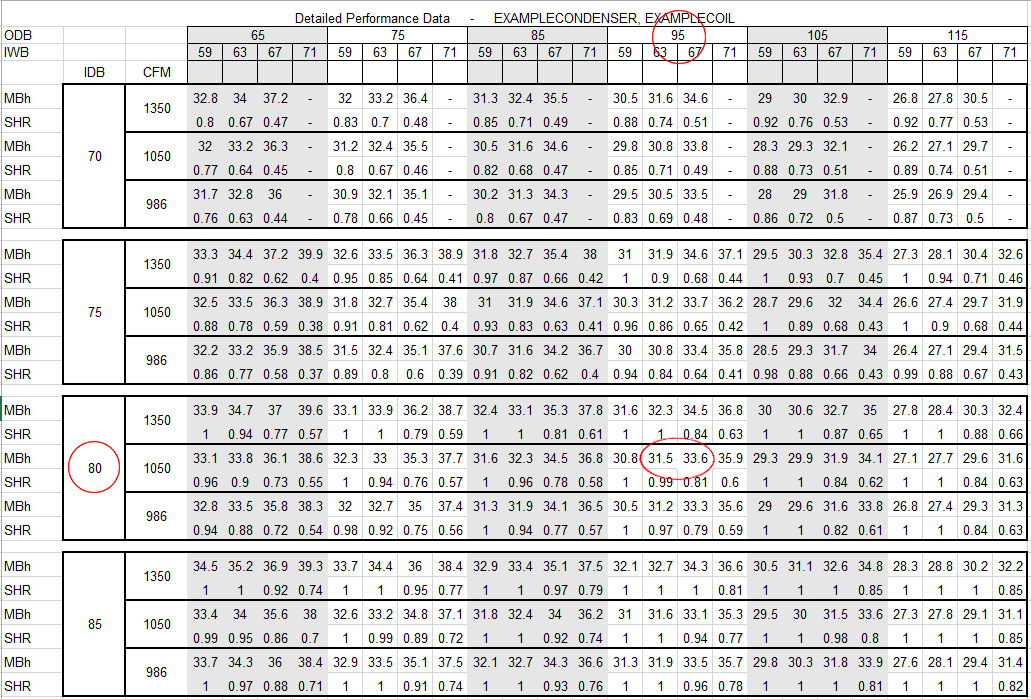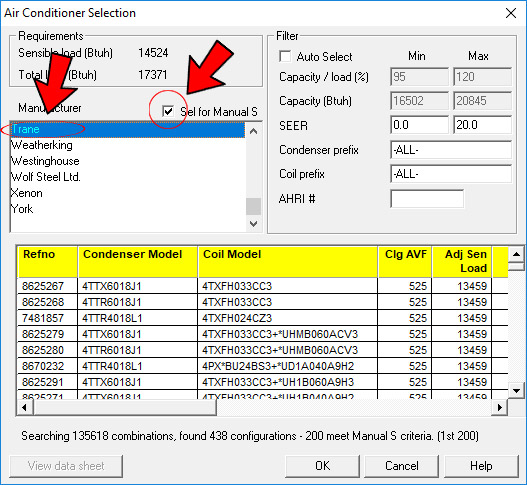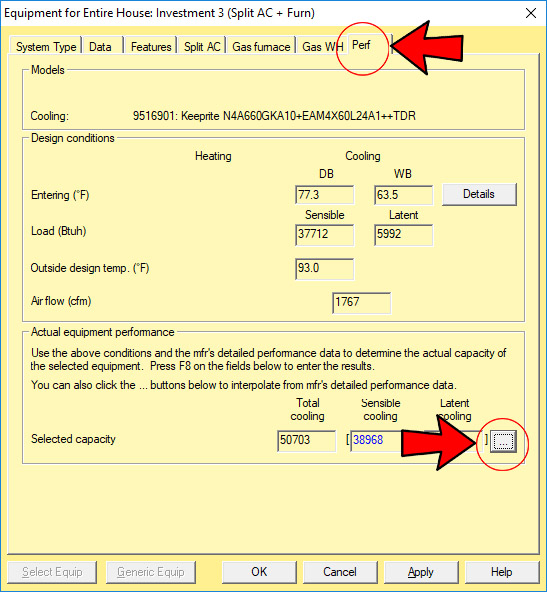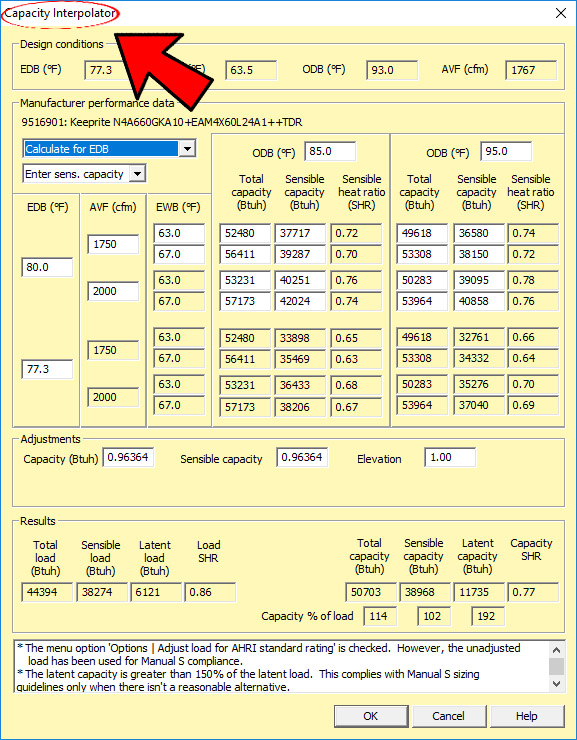Have you ever asked yourself, “In what world does replacing like for like not make sense?”
Read at Your Own Risk Disclaimer:
Let’s start this article the Right-Way®… Implying the average HVAC Contractor doesn’t run into plenty of AOR situations where replacing like for like is perfectly appropriate, and the best solution, is simply foolhardy. It’s like asking Democrats and Republicans to agree on a topic or like asking Bruins hockey fans to route for the Blues. At MiTek-Wrightsoft, we are not so reckless, harebrained or unwise. This article was written for the “what if” situations, for the inquiring minds who want to know the right solution for every scenario – not guess.
We design MiTek-Wrightsoft products for anyone who thinks he/she can make good use of the software and has a credit card. That being said, we write these “what if” scenarios for the industry pioneers – for the mavericks and thought leaders who assume it’s possible the person who designed each home’s system 10, 15, or 20+ years ago was either not 100% competent at performing math calculations for a load, or was simply careless. Maybe there were changes to the home or some technology enhancements. Whatever the reason, the job just didn’t get done right. We salute those who choose to read on as you seek for knowledge in all things HVAC.
What if you were working on a home with a 3 ton unit requiring replacement, and (without much digging) learned the homeowners were generally comfortable with their old air conditioning system’s performance before it went kerplunk. It’s tempting sometimes to trudge forward without digging a little deeper. Having learned by experience, many HVAC professionals have found the result of guessing can lead to a disastrous end. There are times when it is a mistake to assume replacing like for like will keep these particular homeowners happy. Why? Let’s explore this situation to see what potentially comes to light.
What indicators might raise red flags in this situation?
- How often was the homeowner seeking repairs on the system over the years? Was it excessive?
- Did the system last as long as it should have? Or did it go kerplunk earlier than you would have expected?
If you answered yes to either (or both) of these questions, plus factoring in how the last HVAC Contractor might have miscalculated, you don’t even need MiTek-Wrightsoft to contemplate there could be issues if you simply replace like for like in this situation. Oversized systems are sneaky and this is where your inner detective becomes an asset. Only the most egregious cases will have so many obvious red flags – most will fly under the radar.
MiTek-Wrightsoft Makes Load Calculations Easy
Imagine you use MiTek-Wrightsoft’s Right-Suite Universal, Right-Mobile Consultant or Right-J Mobile to uncover their system was oversized. Maybe their 3 ton system could have been configured and worked even better with a 2.5 ton system. Ignoring the facts presented to you by the software is normally unwise. You already identified some red flags, now the software is a confirmation you should pay attention to the red flags. Gaining a thorough understanding of the problem will help you diagnose the appropriate solution. You want to be more of a Columbo here – not an Inspector Clouseau. Believing in the software over what the last HVAC professional provided is usually a good start. Numbers are reliable.
Digging Deeper
Digging a little deeper is the best plan for success in this case. Let’s say your expert detective work uncovers the ductwork in the home is undersized. I’m sure I’m preaching to the choir here, but we all know undersized ducts are responsible for reducing the air flow and the total capacity of a system. Long time HVAC professionals might be yawning about now, but for everyone else, I’m going to point out the negative consequences might not be immediately evident to the homeowners. Years of undue strain placed on the system will most likely lead to the need for frequent repairs and the possibility the system won’t reach its full life expectancy. These consequences might not bother you, but the homeowners will certainly be displeased and it will cost them financially.
The Pearl You Have Been Waiting For…
I’m sure you realize an oversized system will short cycle, which leads to less moisture removal and uncomfortable homeowners. These homeowners have been kept comfortable with the balance provided by their special circumstances. Undersized ducts have restricted airflow, and it’s been great for solving the moisture removal issue that could have arisen from oversizing the system. Yet this balance has come at a cost. In addition to their system requiring frequent repairs and not lasting as long as it should have, these homeowners have also shouldered the burden of higher monthly energy bills due to the way their system was designed. You could redesign their system the same way, but wouldn’t you be doing them a disservice?
How Like for Like Potentially Upsets a Perfect Balance
Technology has changed a lot over the last 20 years. I recently watched the old Jurassic Park movie from 1993. In 1993, I thought the special effects were amazing. 25 years later, it doesn’t look so realistic. Technology has changed so rapidly over the years, it was actually hard to watch.
Every industry has experienced dramatic upgrades and innovations since 1993. Today’s HVAC systems employ refrigerant to help new systems operate more efficiently. This small factor could lead to the perfect balance being disturbed.
New fan choices could also disturb the balance. What if you decide to install a variable speed fan thinking you needed to compensate for the undersized ducts, or to save the homeowner money by reducing their HVAC system’s extreme level of energy consumption? Again, this situation might lead to less moisture being removed from the air by providing a higher volume of air. The fan will also be forced to work harder with the undersized ducts, limiting the energy savings you potentially promised with this upgrade.
Results in both cases:
Clients are unhappy with the like for like replacement you provided.
The Best Solution Emerges from the Best Detective Work
Now is when you have the opportunity to distinguish yourself from your competition. When everyone else is proposing a like for like replacement with little explanation, your presentation will demonstrate your expertise to your customers. Using Wrightsoft’s proposal tools, your in-home presentation will deliver a well thought out design for their new system. When other contractors are trying to sell them a bigger, 3 ton system, you will build trust by offering them a slightly smaller, more affordable 2.5 ton option. As you educate your clients about their unique home’s qualities, you will build trust. No one wants less air conditioning, but when you take the time to show them the “why” behind the decision, your customers will be extremely appreciative.
One of the biggest fears customers have is that they will be sold something they don’t need. When you propose a less expensive option than all the other contractors, you prove you aren’t just there to sell them the biggest system possible. You are there to design the best system for their unique home’s needs.
The other benefit to proposing a lower capacity system is that you will have more breathing room when it comes to pricing. Some of your low-ball competitors will be offering a crazy low price for their slightly higher capacity system. Your 2.5 ton unit will look like a great deal without compromising your margin. At the end of the day, you are in business to make a profit on purpose.
It’s important to note, your work has the potential to lower their monthly energy bills, reduce the expenses they incur from repairs and help their system last longer. But this doesn’t mean you will make less money from the customer. On the contrary, when you propose they need bi-yearly inspections to keep their system running optimally, they will be more apt to trust you are doing what is best for them. They will also have more money to spend on this kind of maintenance. Additionally, every business owner knows positive word of mouth and referrals are always the outcome when you provide exceptional services.





